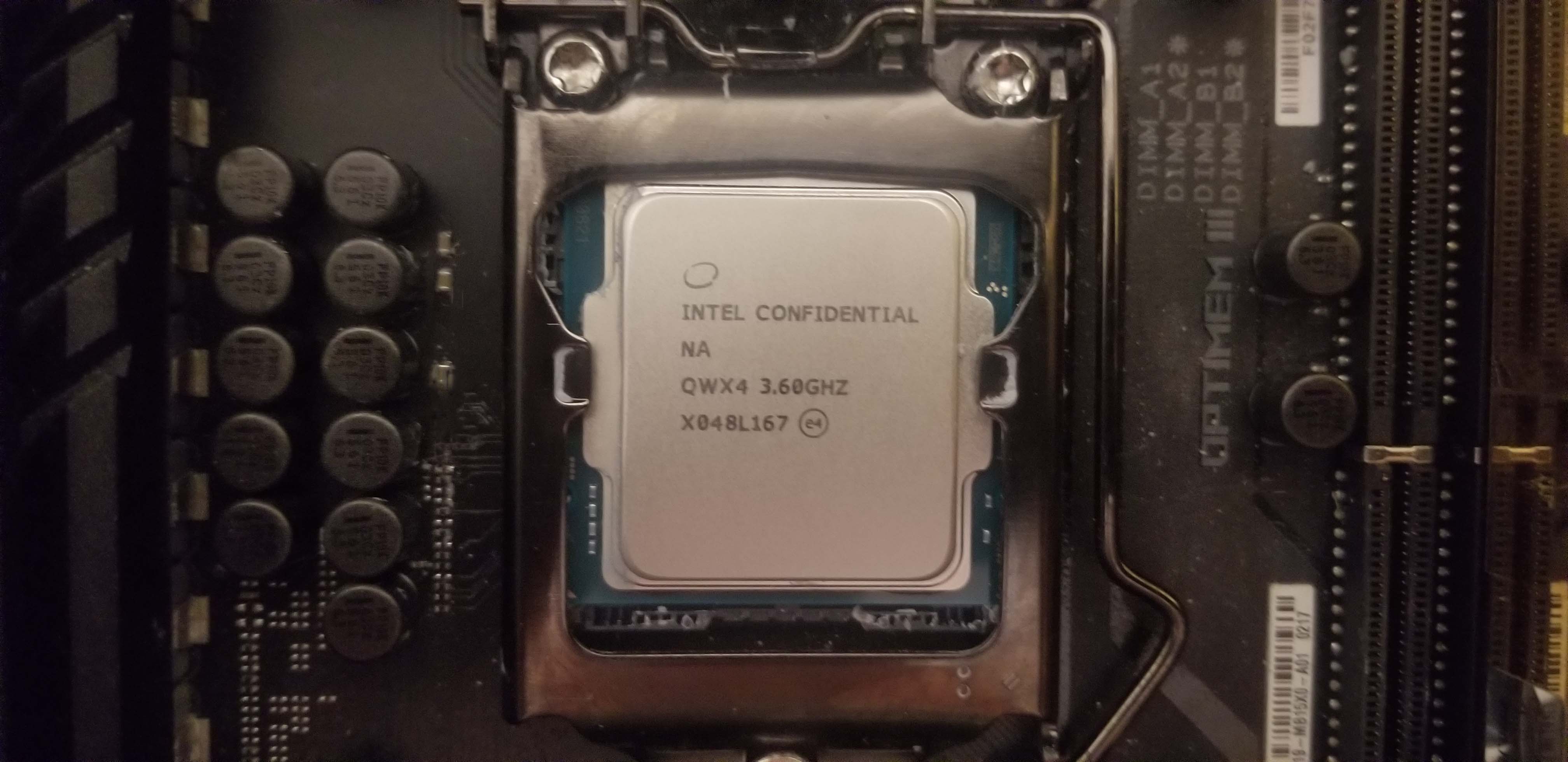Why you can trust Tom's Hardware
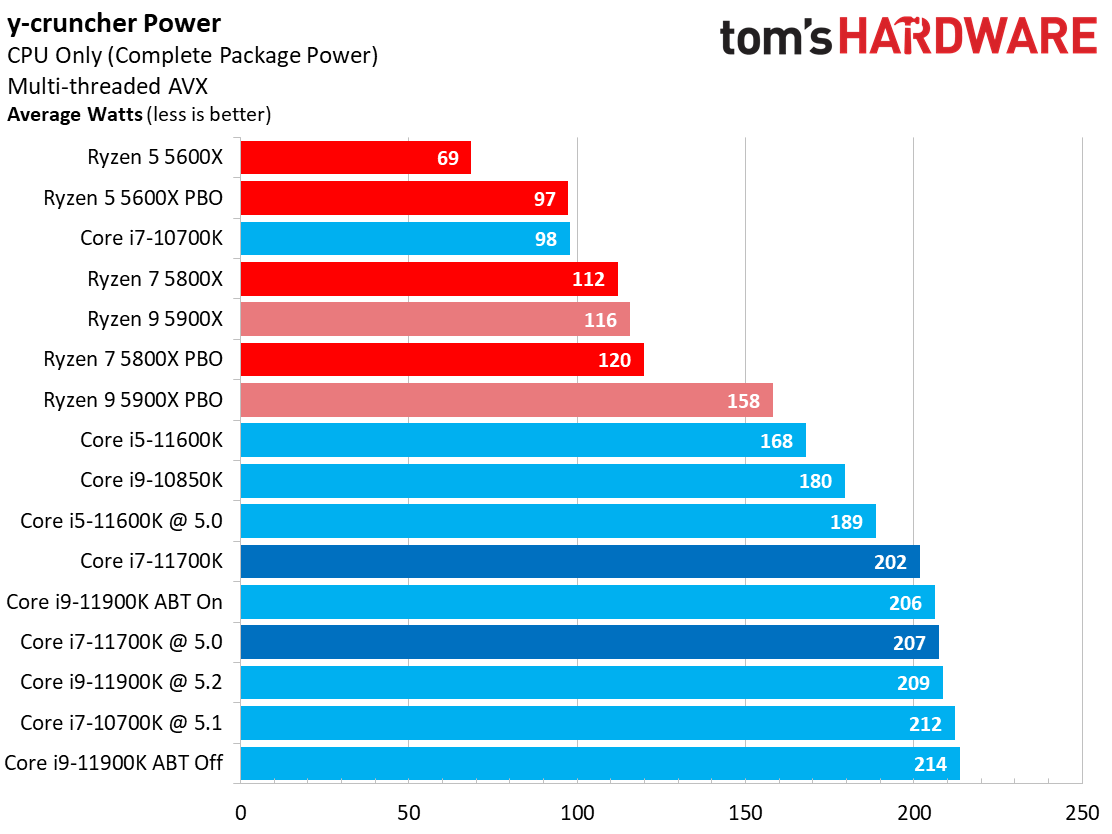
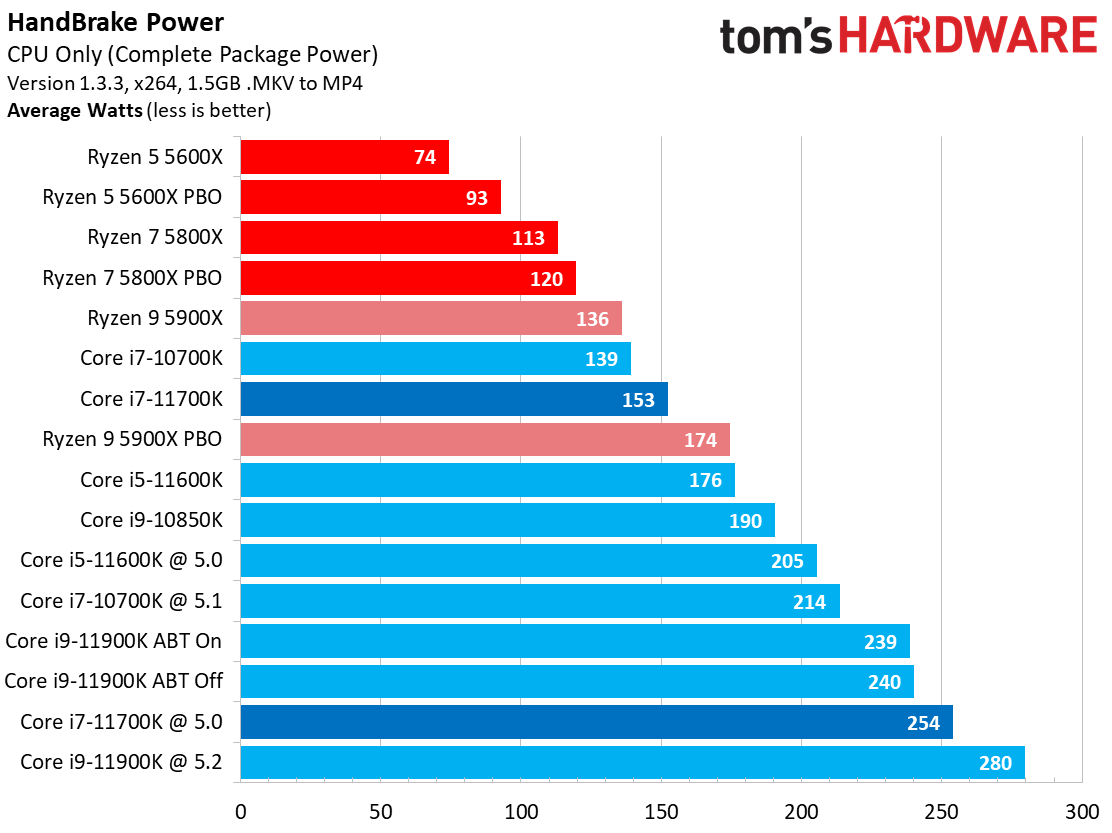
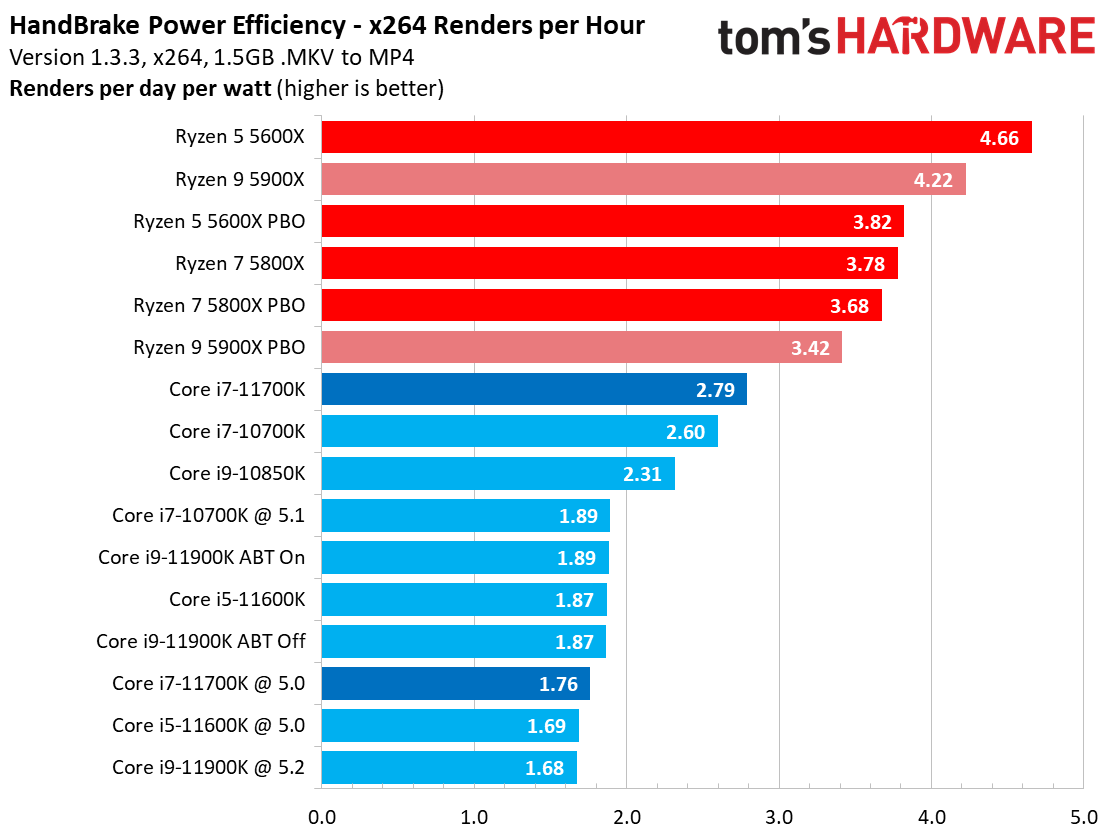
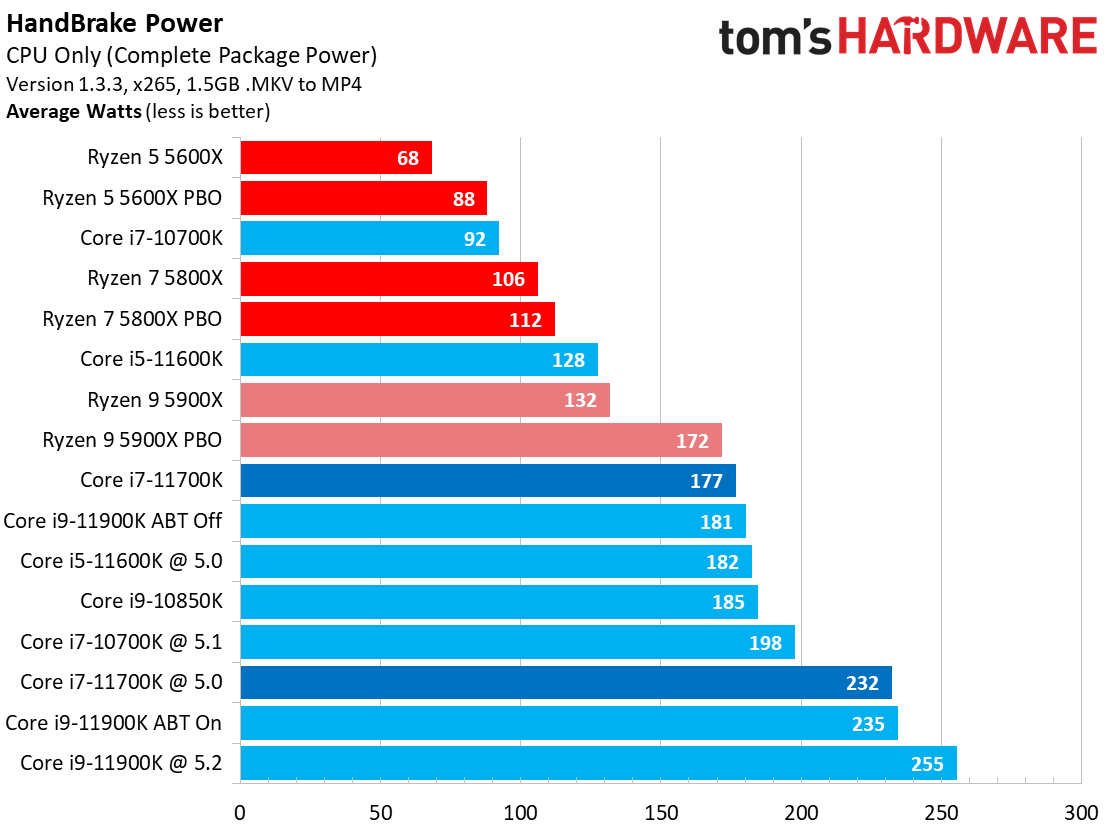
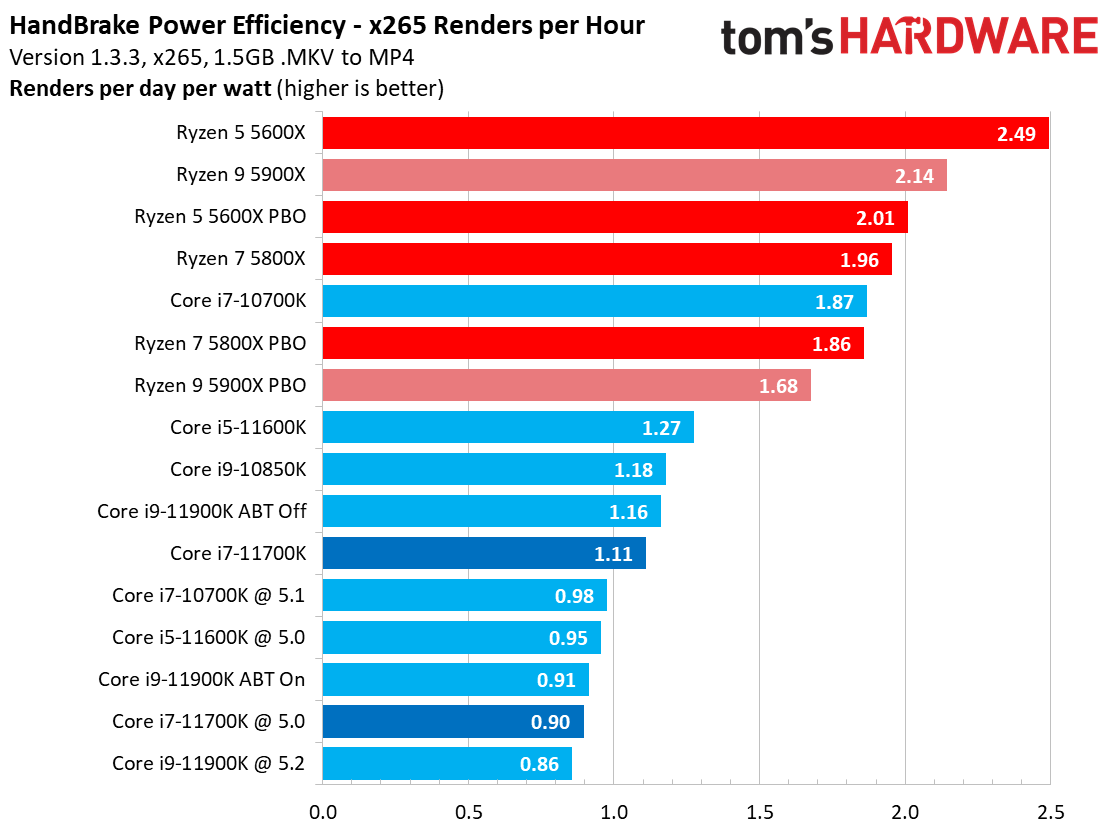
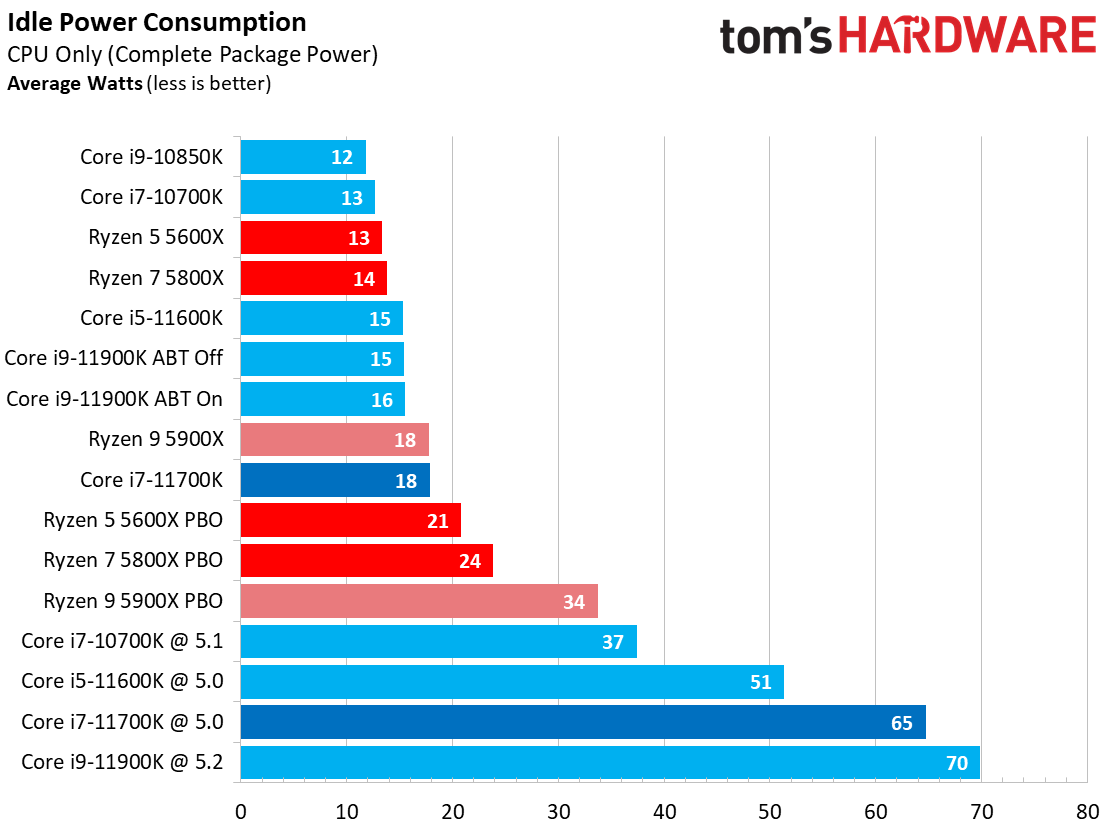
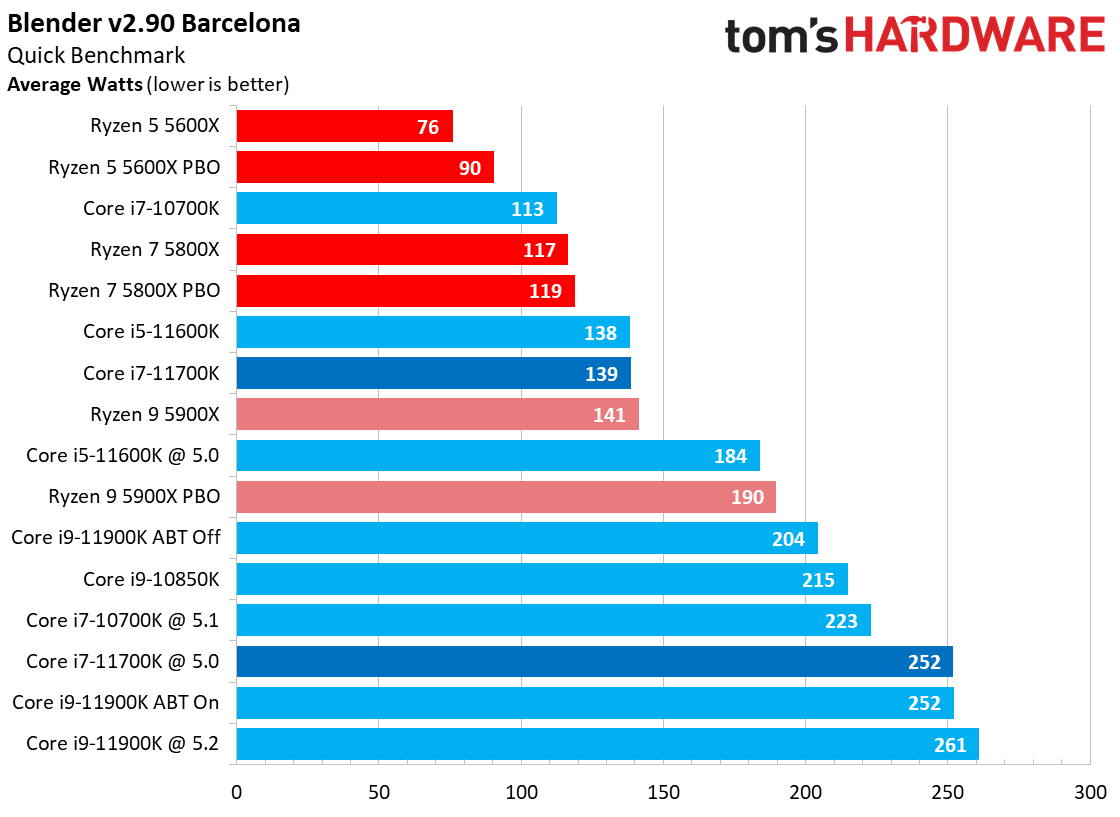
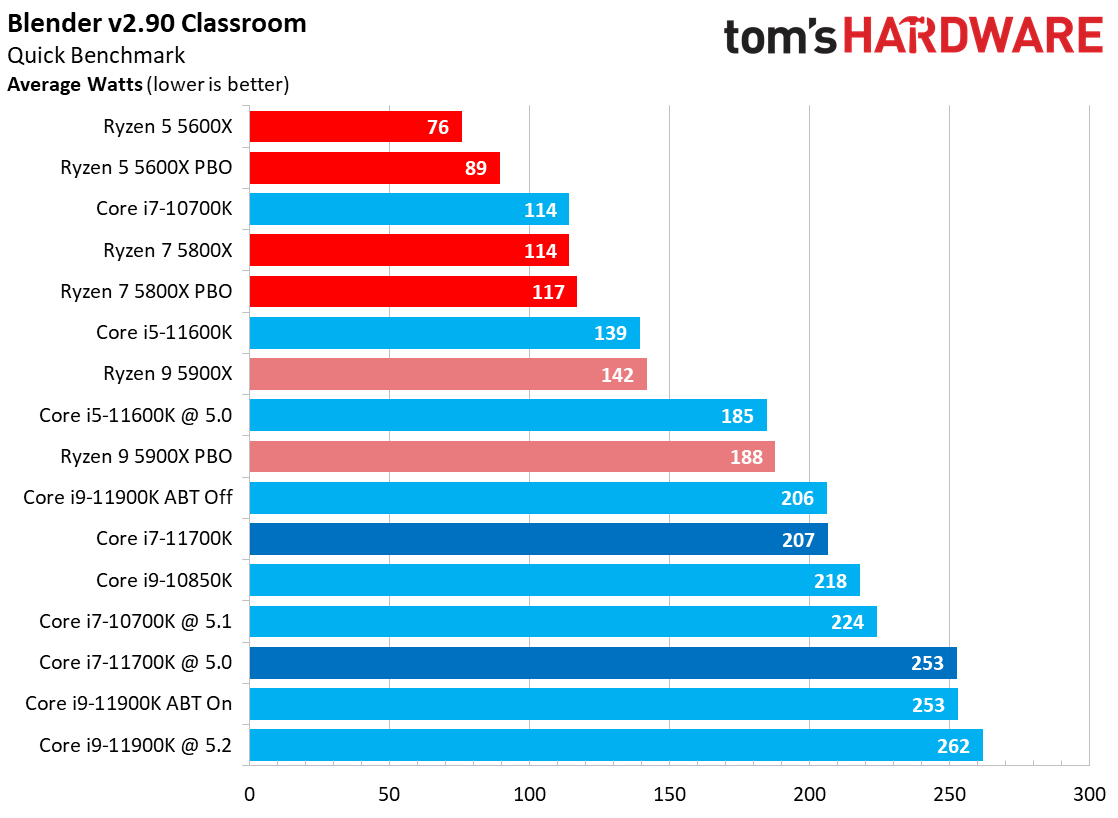
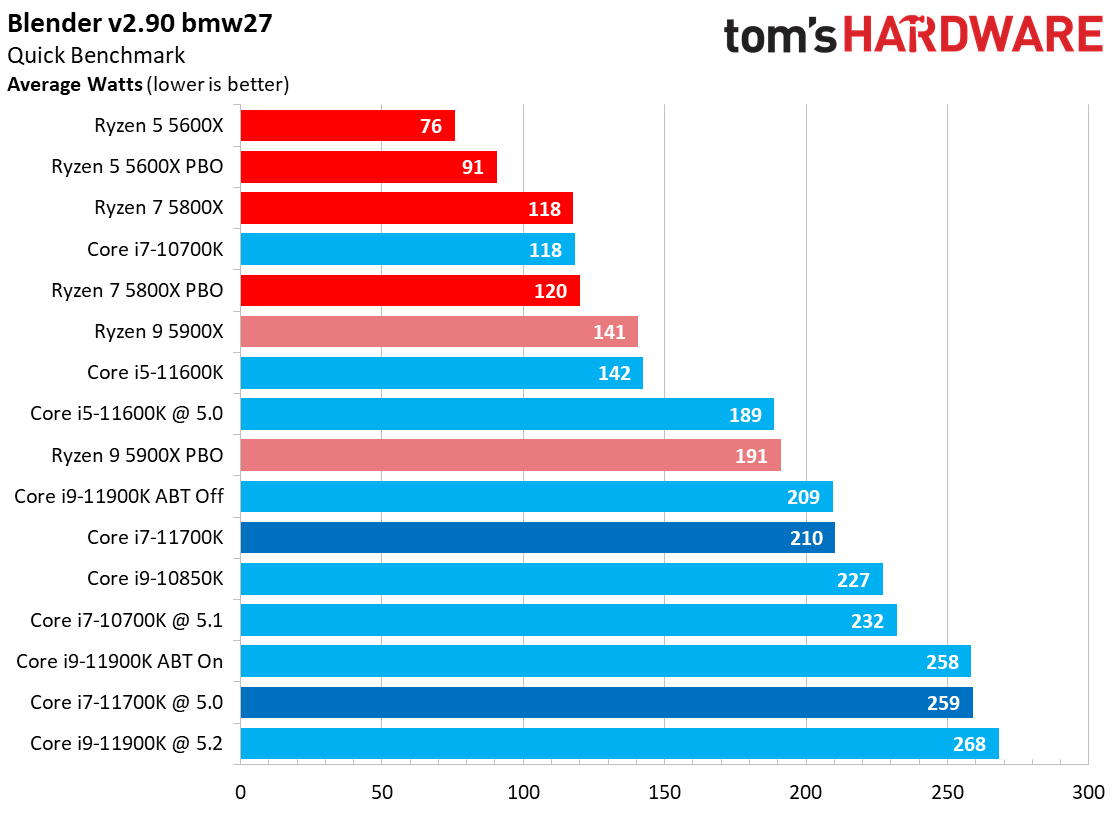
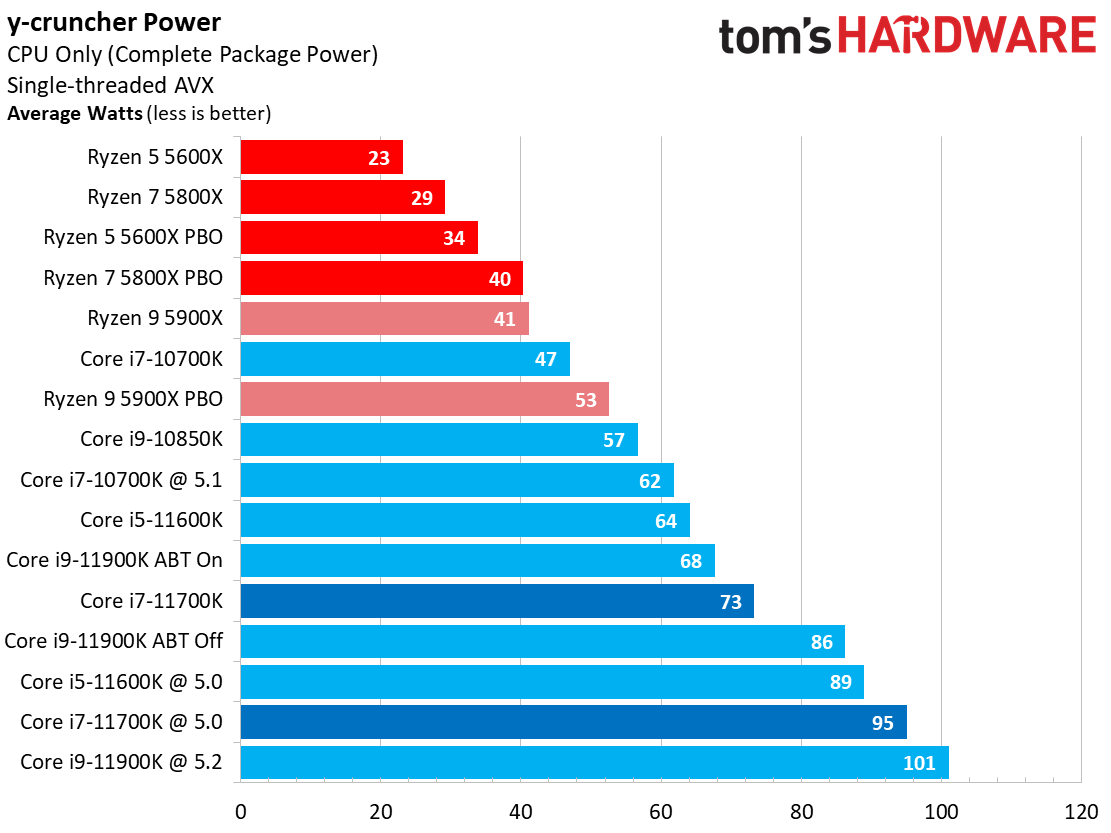
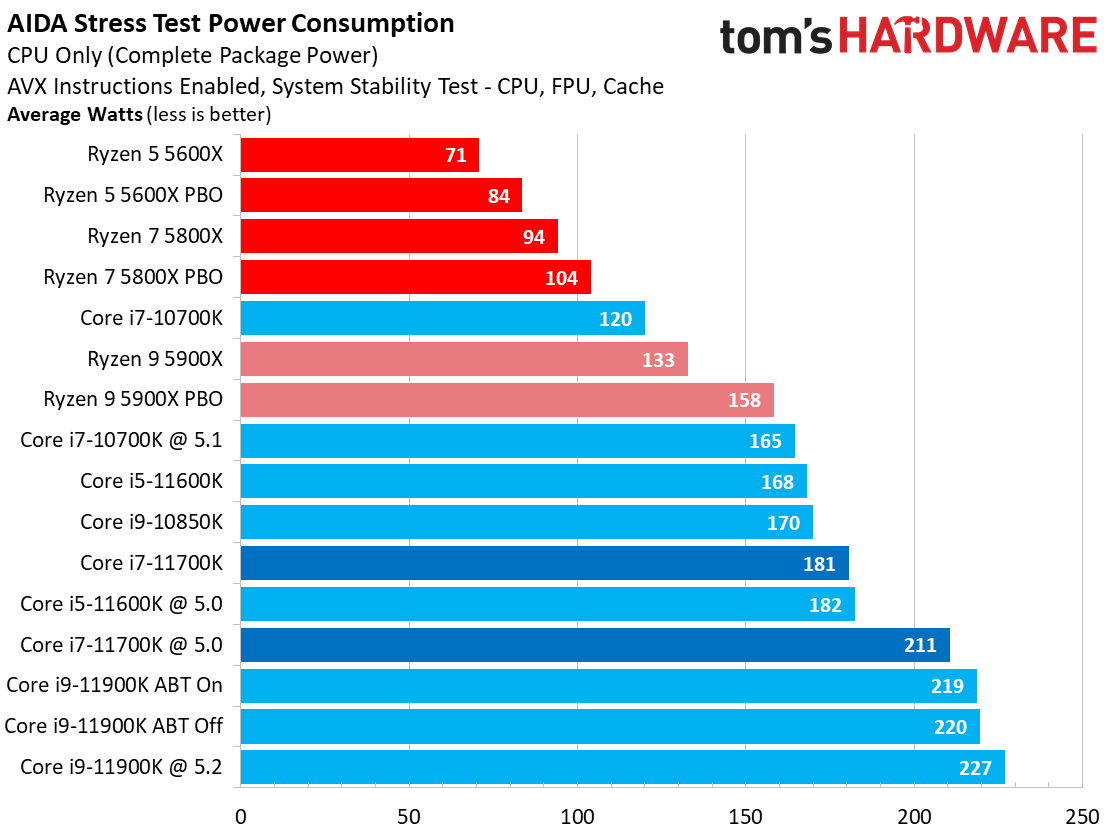
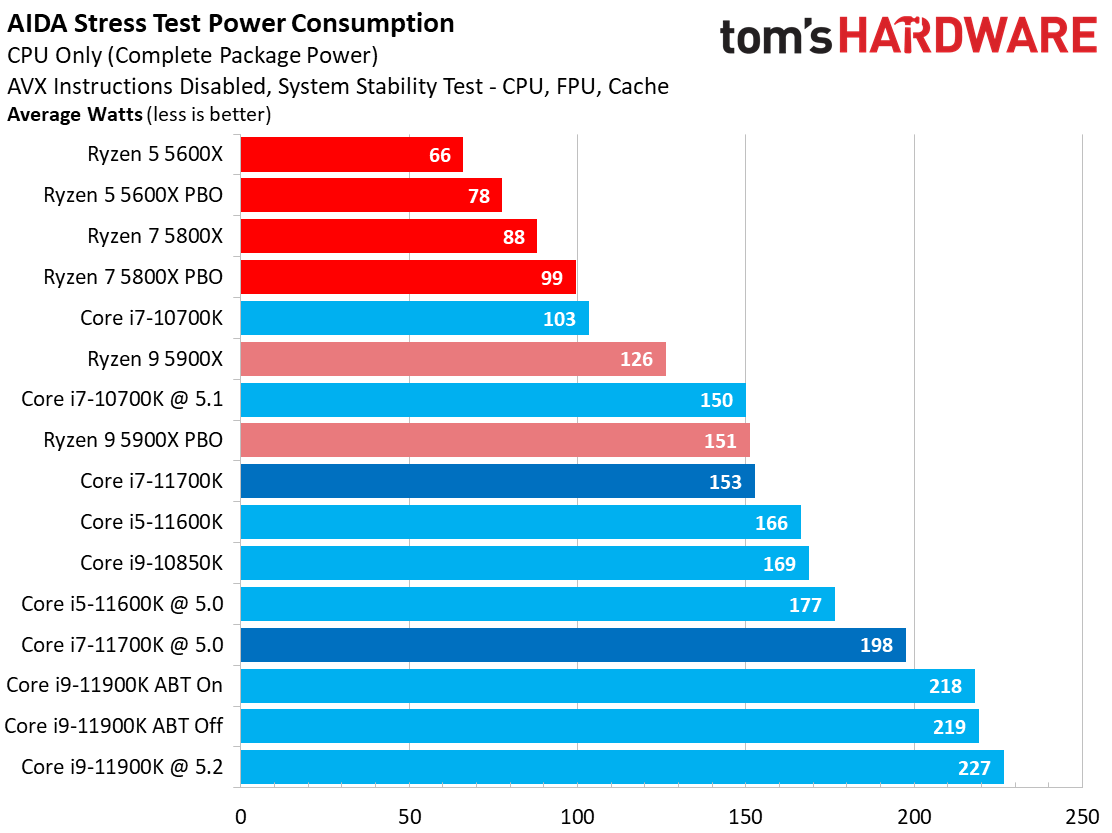
It's no secret that Intel has dialed up the power with Rocket Lake to compete with AMD's vastly more efficient chips, so you'll have to ignore the higher power consumption if you choose to go with an 11th-gen Intel chip. As such, there are no real surprises here — the Core i7-11700K draws more power in every measurement than the Ryzen 5000 lineup, and also more power than its 10th-gen predecessor, the Core i7-10700K.
As you can see in our renders-per-day measurements, Intel's Rocket Lake isn't in the same league as Ryzen 5000 in terms of efficiency, either. You'll have to turn a blind eye to the high power consumption if you choose a Rocket Lake processor.
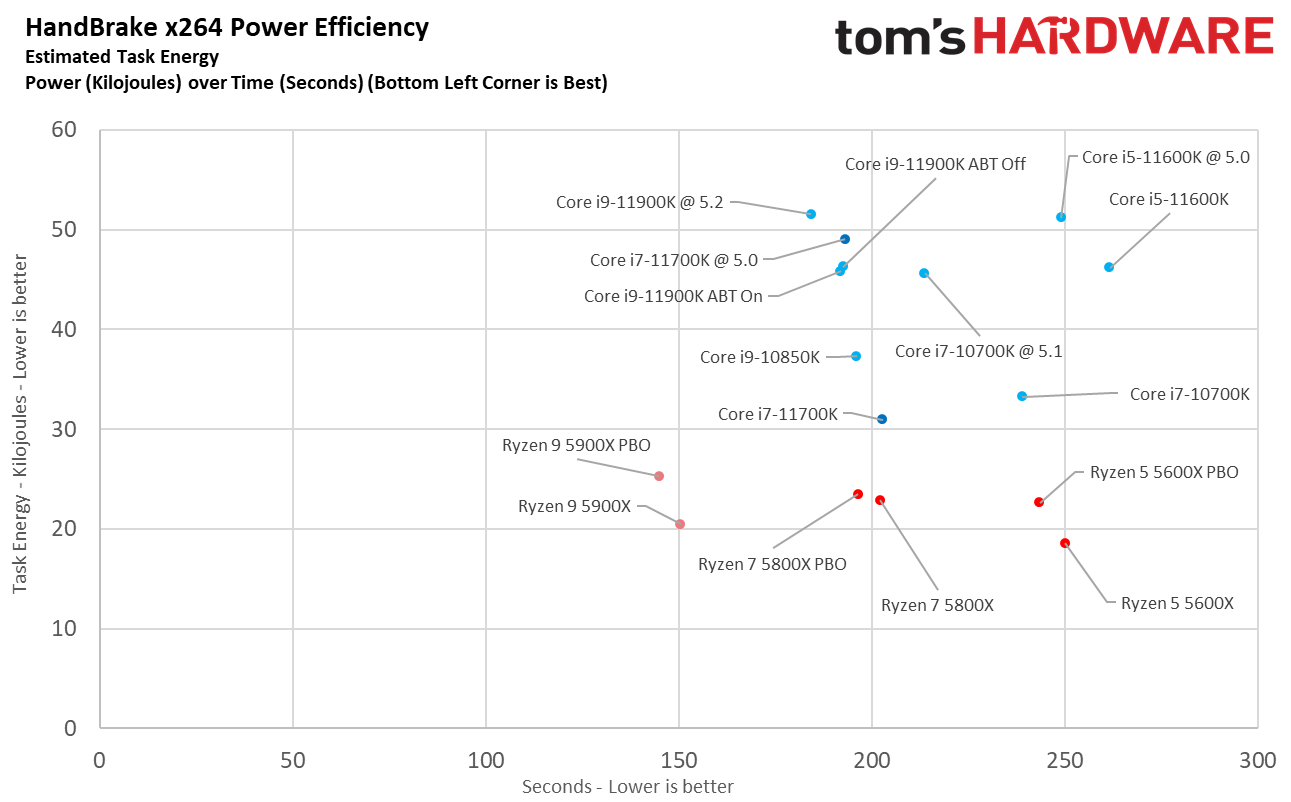
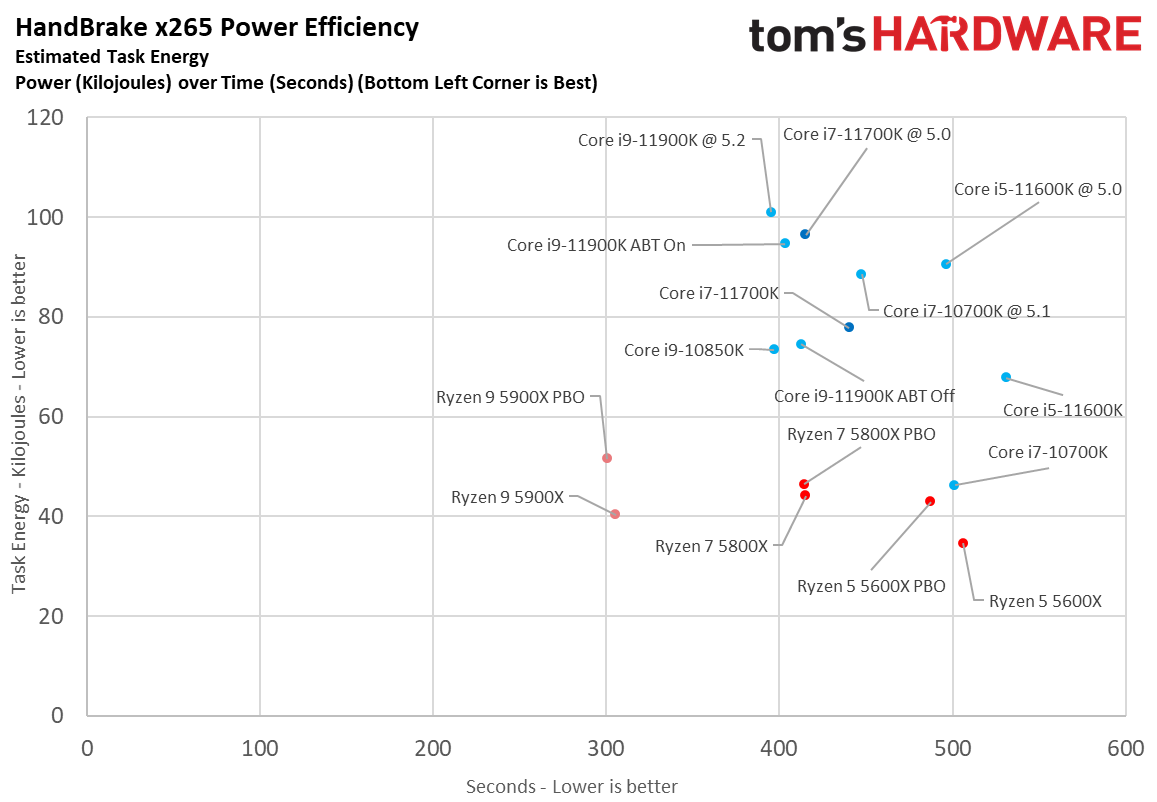
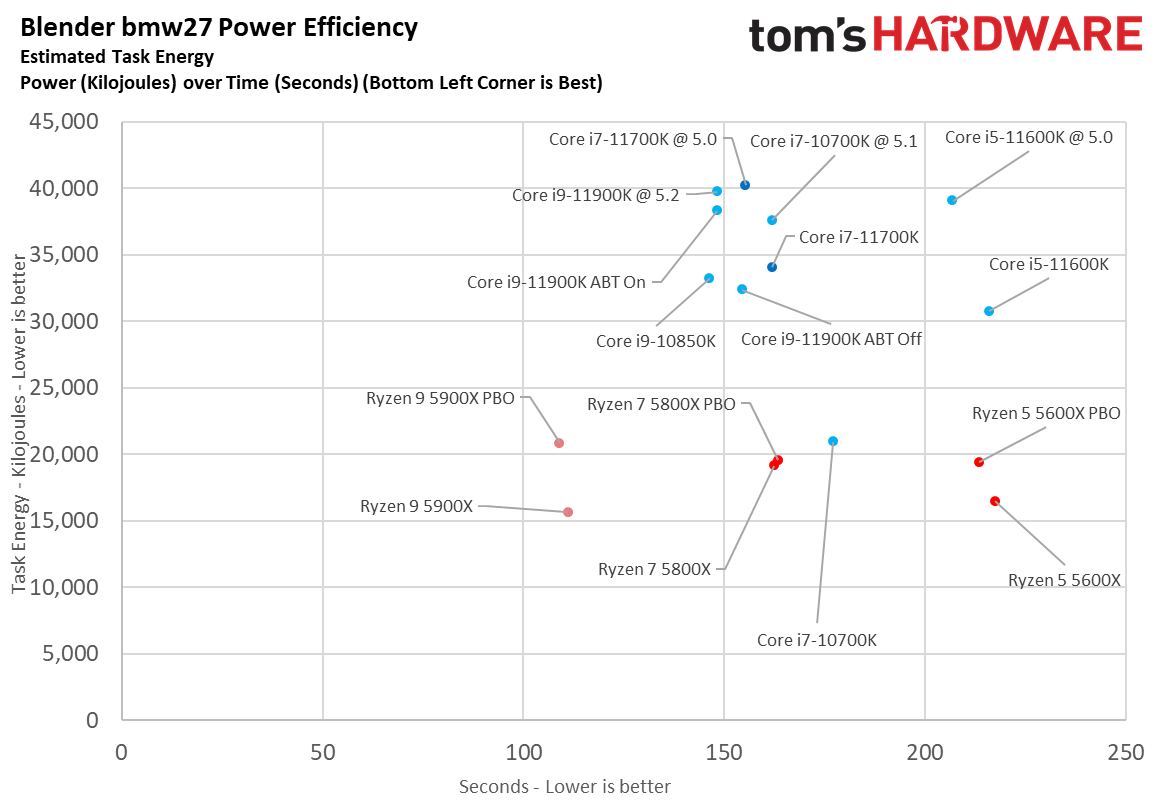
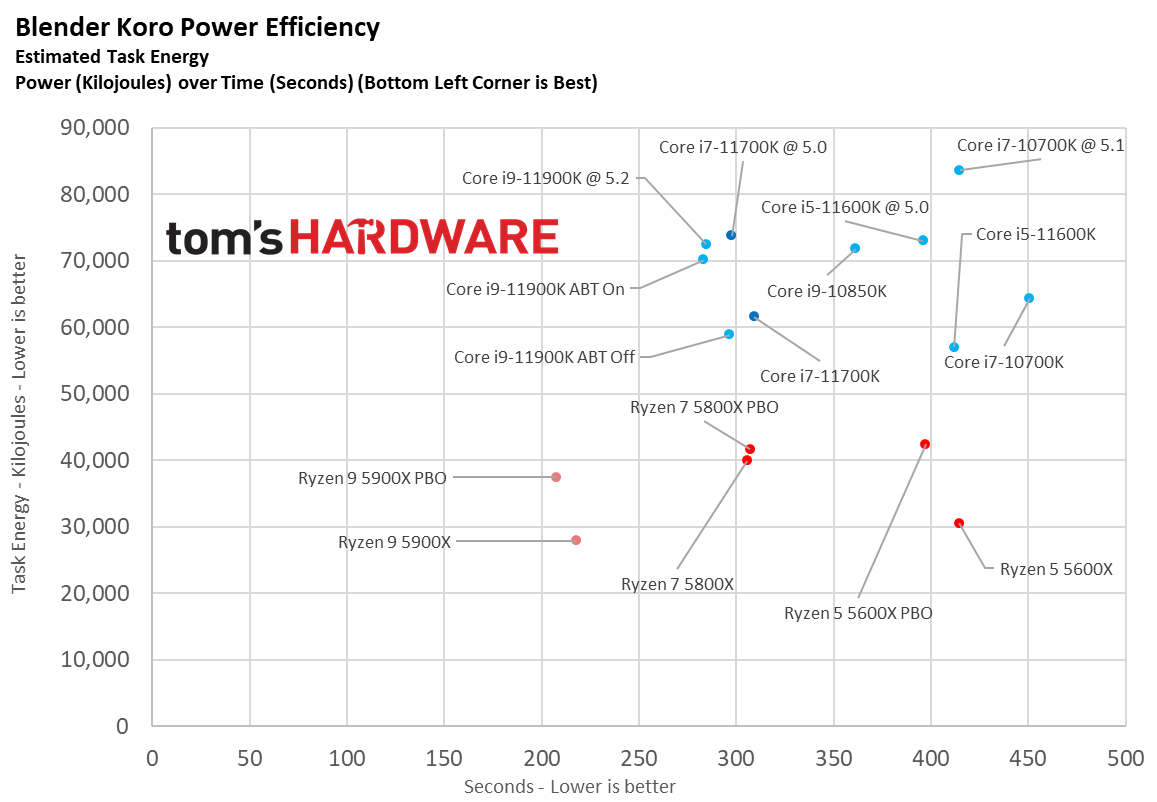
Here we take a slightly different look at power consumption by calculating the cumulative amount of energy required to perform Blender and x264 and x265 HandBrake workloads, respectively. We plot this 'task energy' value in Kilojoules on the left side of the chart.
These workloads are comprised of a fixed amount of work, so we can plot the task energy against the time required to finish the job (bottom axis), thus generating a really useful power chart.
Bear in mind that faster compute times, and lower task energy requirements, are ideal. That means processors that fall the closest to the bottom left corner of the chart are best. That distinction still belongs to Ryzen.
MORE: Best CPUs
MORE: CPU Benchmarks Hierarchy
MORE: All CPUs Content
Get Tom's Hardware's best news and in-depth reviews, straight to your inbox.
Current page: Intel Core i7-11700K Power Consumption and Efficiency
Prev Page Intel Core i7-11700K Test Setup, Boost Testing, Overclocking, and Thermals Next Page Intel Core i7-11700K Gaming Benchmarks
Paul Alcorn is the Editor-in-Chief for Tom's Hardware US. He also writes news and reviews on CPUs, storage, and enterprise hardware.
-
BeaRi72 Or just buy i7 11700 (non-K).Reply
Increase PL1 in Bios -->
same Speed, 40,- cheaper and, if needed, with box-cooler (with copper-core). -
spongiemaster The 5800x is down to $406 at Amazon right now. If you're building a new system, there is no logical reason for a home user to pick a $6 cheaper 11700k over the 5800x at those pricesReply -
punkncat Replyspongiemaster said:The 5800x is down to $406 at Amazon right now. If you're building a new system, there is no logical reason for a home user to pick a $6 cheaper 11700k over the 5800x at those prices
Graphics
Card -
spongiemaster Reply
Ok, one reason, if you don't need a graphics card and an IGP is fine, then an 11700k would make more sense. If you don't have any graphics card and you need one for a new system, there's no point in buying anything at all right now. Wait until you get your graphics card, because there's no knowing how long that could take, and then buy the rest of the components. Prices are more likely to go down now than up, so you'll save money waiting. Depending on how long it takes to get your graphics, it may make more sense to wait a bit longer for Alder Lake or Zen 4.punkncat said:Graphics
Card -
Howardohyea A few days back I saw the 11700K was around 360 from Amazon, but then again with this CPU's low overclocking I guess that an cheaper i7 11700 non-K is better, just raise the power limit.Reply
Mostly same performance with 5800X (okay maybe less), you can save on the motherboard, CPU, and cooling.
